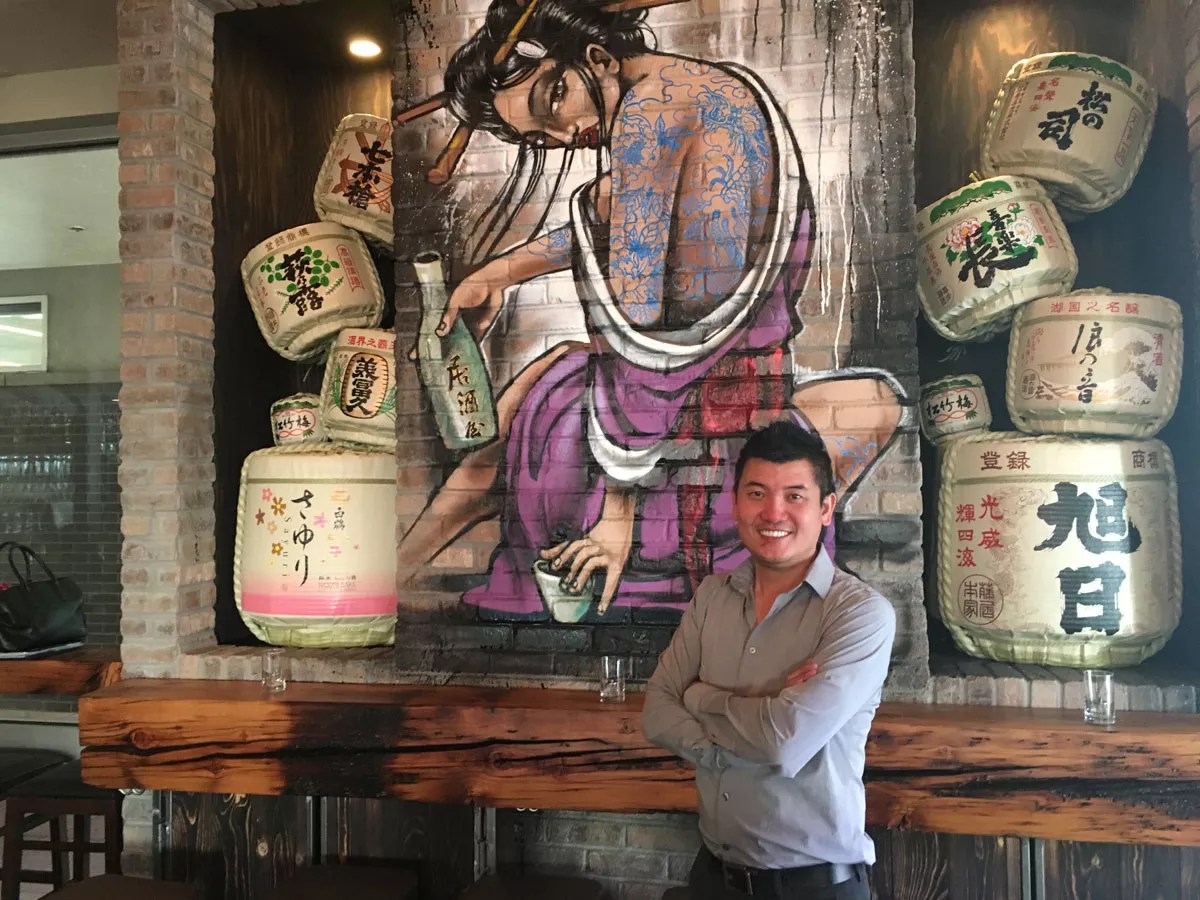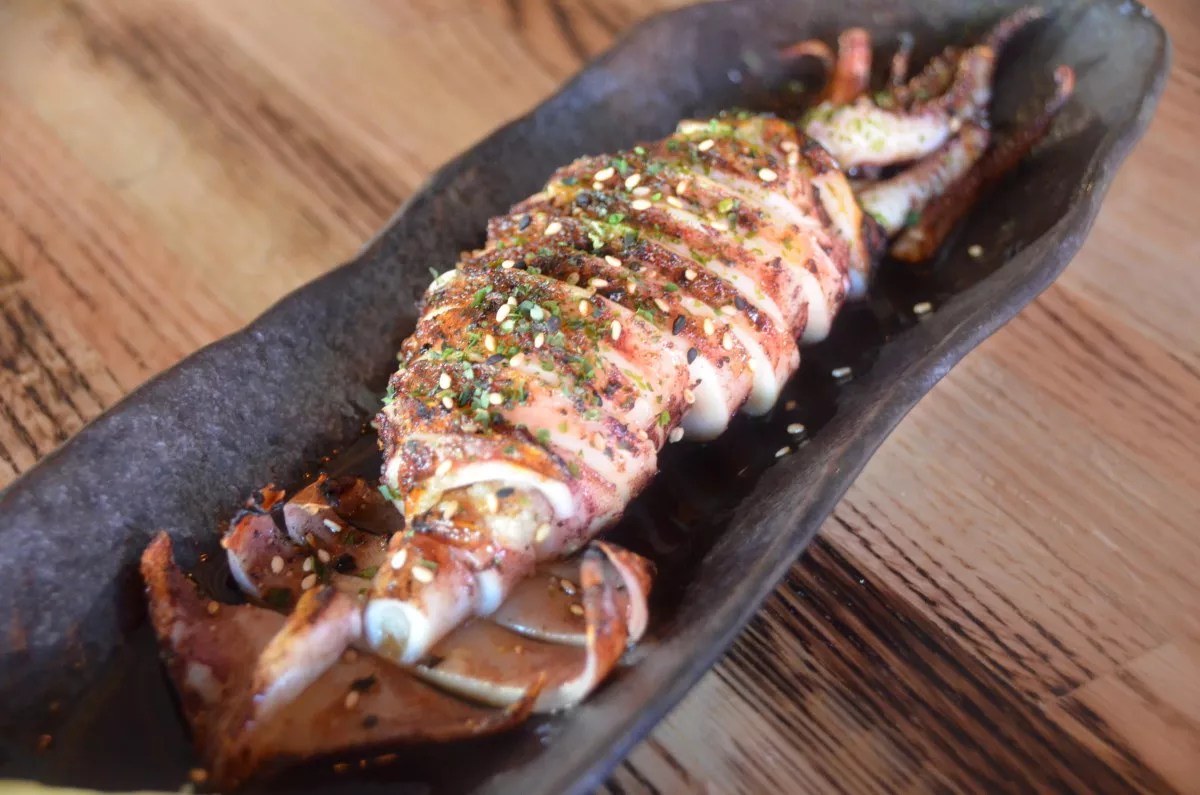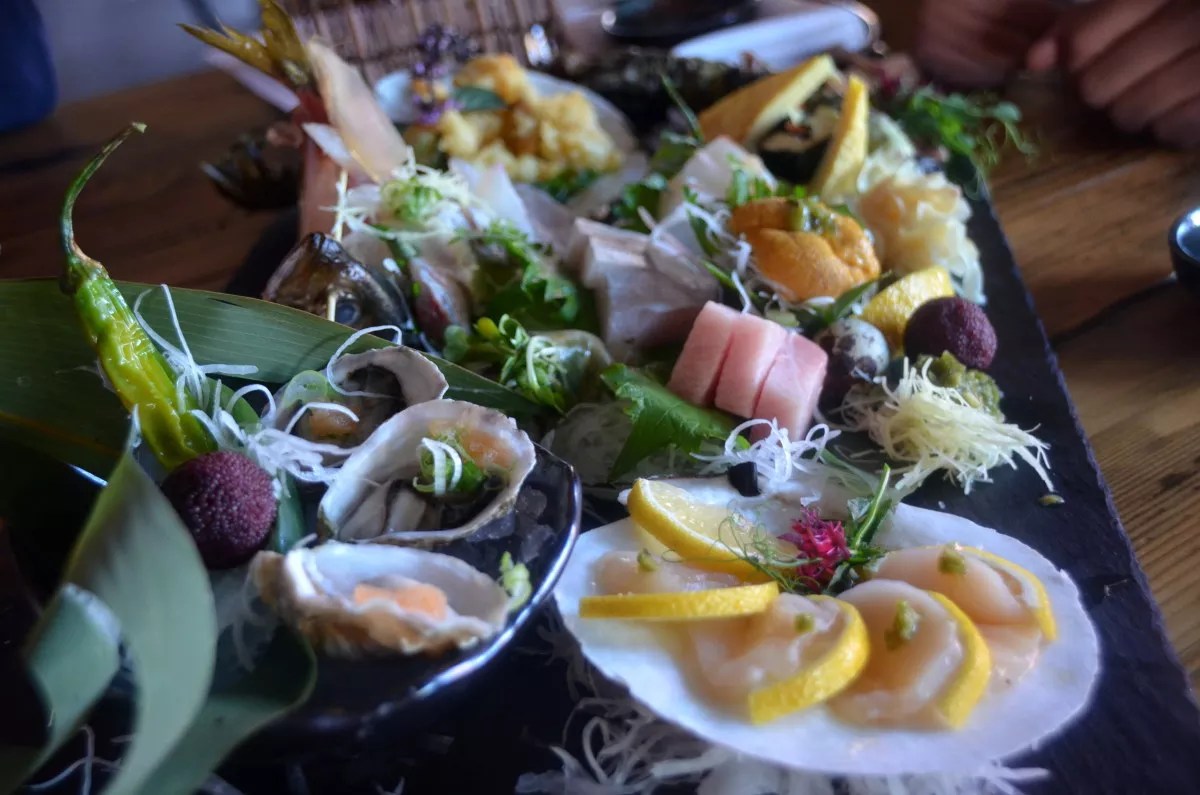
Laura Shunk

Audio By Carbonatix
When Hong Lee first contemplated bringing a Japanese restaurant to Lower Highland, he envisioned a fine-dining concept – but he soon realized that white tablecloths weren’t quite the right vibe. “I picked this neighborhood and changed my concept,” he says. Lee had plenty of experience to draw from; he’d worked in his family’s restaurant since he was a teenager and became a partner in Westminster’s East Moon Asian Bistro when he graduated from college. But after pushing that spot for eight years, he was ready for something more.
After realizing that LoHi wasn’t ready for exactly what he had in mind, he retooled his plans and came up with a much more casual izakaya, modeled after lively enclaves of drinking and snacking in Japan. He also came up with a new address: Although he’d initially been after the address that now houses Sushi Ronin, he wound up opening Mizu Izakaya at 16th and Boulder streets, one of the neighborhood’s busiest corners, where he’s made it his personal mission to open eaters’ eyes to a world of Japanese food beyond sushi. We recently caught up with the restaurateur to talk about izakaya culture, why he’d never want to be a chef, and why ramen might be his next project.
Westword: At Mizu, you’re channeling Japan’s izakaya culture, which is an essential part of that country’s dining scene but fairly rare here in the United States. Can you talk a bit about why you wanted to bring that here to Denver?
Hong Lee: The number-one thing I love [about izakaya culture] is the energy. There are over 180,000 izakayas in Tokyo, and every single one is busy. They’re so great – they’re a hangout place for the working class. After work, the first thing people do is go to the izakaya. The menus are amazing in Japan – they’re all small tapas. But you’re not going there just to get food; you’re really there to hang out. Every single night, I met someone new and became friends. I love that. You want to meet someone new and hang out, you go to an izakaya. You have a long day and want to relax, you go to an izakaya. Every time you walk in, it’s like you’re with friends and family. I love that concept.
Will you step up to support Westword this year?
At Westword, we’re small and scrappy — and we make the most of every dollar from our supporters. Right now, we’re $20,000 away from reaching our December 31 goal of $50,000. If you’ve ever learned something new, stayed informed, or felt more connected because of Westword, now’s the time to give back.
And drinking is very much a part of the izakaya experience, right? I’ve most often heard izakayas described as a place where you go primarily to drink and secondarily to snack.
The bar side is very important in the izakaya. In Japan, at a traditional izakaya, it’s all beer and sake.
But you’ve adapted that a bit, right?
We’ve done it a bit differently. For instance, we’ve captured craft cocktails with an Asian twist using Japanese juice, fruit and spice. And Denver being the best place in the world for brewing, all our taps are local. But we also have over fifty different types of sake and a lot of Japanese whisky. The sake list and wine list were put together by one of the sake masters in the world [local sake expert and master sommelier Sally Mohr]. Being in LoHi, everything has to be unique. Everything is hand-picked by us.
How should novices approach sake?
A lot of people think sake is only hot, and that’s not the case at all. Hot sake is everyday drinking sake. We have hot sake, but most of our sake is cold. Our list is broken down into very user-friendly categories, ranked from dry to sweet. And our sake list covers all the regions of Japan. Drinking sake is similar to drinking wine. If you tell us what wine you like, we can help you find a sake.

Whole Japanese grilled squid at Mizu Izakaya.
Lindsey Bartlett
Tell me a bit about traditional izakaya fare.
A lot of the food is cooked over a charcoal grill. We use a different type of charcoal we import from Japan, and it burns at a really high temperature. It adds a smoke flavor to the meat but keeps the meat moist – which is really different from a gas grill. Traditional izakaya food is kara-age [fried chicken] and grilled squid, and stuff like grilled gizzard and heart.
But you’ve added to that traditional list.
We’ve changed it a little. Being in LoHi, we want to cater to a healthy lifestyle. We’ll be working with the farmers’ market in the spring. Most of our meats are local. And we have a lot of tapas – so some Spanish influence – Brussels sprouts and mashed potatoes. Our menu has no guidelines.
You’ve also incorporated sushi, which is not traditionally izakaya fare, and you’re bringing in some very rare fish. Could you talk to me a bit about that?
I didn’t want to bring in a 100 percent traditional izakaya here. Japanese izakayas don’t really have a sushi bar, but I wanted to make it comfortable. We have two of the best Japanese chefs – at least I think so. Our sushi bar is really traditional. In Japan, with a really good piece of sushi, you have five seconds to get it from the plate to your mouth and then it falls apart. You’re supposed to feel every piece of rice rolling around in your mouth. We run into the challenge that a lot of people here don’t know that. I’m okay introducing people to another side of Japanese food. For the fish, there’s a waiting list for us to get certain fish; a lot of times we don’t know what to expect until three days before we place an order. When you buy from the Tsukiji Market [Tokyo’s most famous fish market], for each fish, you know about the current of the ocean, the temperature of water where they fish and what time it’s caught. We pay attention to all three of those elements. It’s really important for us to know, for example, when was this fish caught: That determines how to prepare the fish. A lot of the fish we get is exotic, but it’s sustainable; it’s not your typical tuna, so it doesn’t hurt the ocean.
Since you mentioned tuna, what’s your take on sustainability issues surrounding that fish in particular? We seem to be quickly depleting the global supply.
I wish eaters knew there is a lot of different fish besides tuna in the sea. Sushi is still a new thing to Americans, so we start off with tuna, and then people want to try different fish. It’s my goal to shift people away from tuna when we have special fish. Tuna doesn’t have much flavor.

A sashimi spread from Mizu Izakaya.
Lindsey Bartlett
You’re a Hong Kong native who is incredibly passionate about Japanese food. What sparked the interest?
I really got into it when I started East Moon [in Westminster]. Being in this business is my passion. This is not just a restaurant to fill people up; it’s an educational place for a lot of customers. We get to show them our side of the culture. That’s what drives me to learn more about the food. I’m still learning every day. Our chef has been amazing. Sometimes fish comes in looking like a sea monster, and I say, “What is that?” Educate me, show me the proper way to serve it, and by the time they finish, it’s a beautiful piece of art on the plate.
Yet you don’t want to become a chef.
I would never put myself in the kitchen. If someone sent a dish back, it would literally destroy my day.
You’ve mentioned LoHi a few times over the course of this interview. Why this neighborhood?
This is the neighborhood where people are not afraid of anything. My passion is introducing people to a different side of Japan than sushi. I hope Mizu brings different Japanese cuisine into Denver.
Like what?
Ramen has been a big hit here, but I would like to see a really traditional ramen place. That might be my next project. In Japan, ramen breaks down into different regions. I would like to serve all different types from all of those regions and show people how [ramen] is done. It’s a long process. The broth is supposed to be thick. The oil and fat on the bowl is massive, and the noodle just slides down your throat. And you have to make the slurping sound when you eat it; if you don’t, the owner will come out and ask if everything’s okay. Slurping is the way to show you’re enjoying the bowl of ramen. I’d put a sign on the table saying slurping is a must.
Mizu Izakuya is located at 1560 Boulder Street; hours are from 4-11 p.m. Monday through Thursday, 4 p.m.-1 a.m. Friday, noon-1 a.m. Saturday, noon-10 p.m. Sunday. For more information, call 720-372-7100 or go to mizudenver.com.